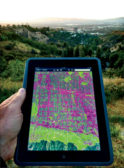Russell Fortmeyer
Russell Fortmeyer is a sustainability consultant and former RECORD editor who lives in Los Angeles.
ARTICLES
Data on water conditions are feeding digital tools to solve myriad planning problems.
Read More
Dynamic Facades: Buildings Show Off New Moves
To enhance environmental performance and create dramatic visual effects, architects devise facades that adapt to changing conditions.
Read More
Chenchow Little Architects
A husband-and-wife team brings design out of the brush and into Australia's suburbs, where the great majority of the nation's population lives.
Read More
Mutsuro Sasaki
Interviewed in his Tokyo office, the Japanese structural engineer reflects on the dramatic turn his work has taken since Toyo Ito's Sendai Mediatheque, nearly eight years ago.
Read More
Copyright ©2024. All Rights Reserved BNP Media.
Design, CMS, Hosting & Web Development :: ePublishing


